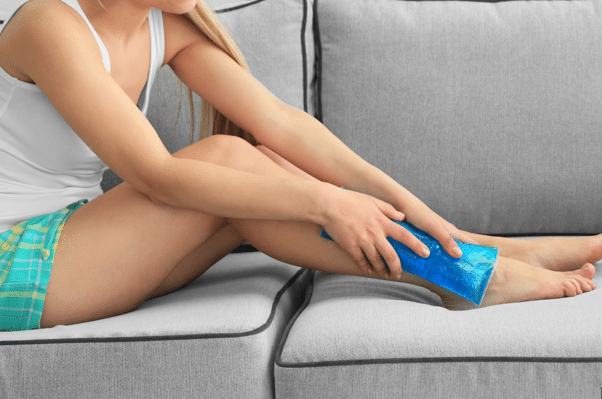Have you ever noticed unusual swelling in your legs? These conditions can only hinder your ability to perform all your daily activities if they are dealt with.
Please take note. It could be a sign of a severe condition. However, it could also be something you can treat at home. Be sure to address this issue and find solutions.
In this article, we give our best advice on how to decrease swelling in your legs and how you can treat it at home. Keep reading to find out more.
Identify the Causes of Swelling
Reducing swelling in your legs requires you to identify the underlying causes. Common causes of swelling include poor circulation, standing or sitting for long periods, and an injury. Other causes include medical conditions such as arthritis, congestive heart failure, and certain medications.
Age may also play a role in leg swelling, as it is more common in older people due to poor circulation or weakened heart muscles. If you are pregnant, hormone production may also cause your legs to swell. If you have more heart failure swollen feet, limiting salt intake and consuming plenty of water to reduce swelling in your legs is essential.
Elevating your feet above heart level can help reduce swelling in the feet, ankles, and legs. If your feet are swollen, you should avoid standing or sitting for long periods. Furthermore, you can massage or wrap your feet in a cold compress.
Exercise can also help to reduce swelling in the feet, ankles, and legs. If you have any chronic conditions, such as diabetes or heart failure, speak with your medical provider for instructions on decreasing swelling in your legs. Overall, you can reduce swelling in your legs through a combination of dietary changes, elevation, and exercise.
Practice Proper Posture and Movement
Keep your heels on the floor and your legs bent at the knees when sitting. It allows your legs to support your weight properly and decreases the pressure on the veins. When standing, ensure your weight is evenly distributed between both legs and your back is straight.
It is also important to move regularly. Standing or walking for several minutes every hour will help promote circulation throughout your legs and prevent fluid buildup.
When walking, take frequent and short breaks between more extended strolls. Avoid walking with your feet turned in or out – this can irritate tendons and cause pain. By following these tips, you can reduce swelling in your legs.
Stretch Out in Between Rest Periods
Start by standing up and shifting your body weight to one leg. Gently raise the heel of your non-weight-bearing foot and hold for 3-5 seconds. Switch legs and repeat.
To stretch the calf muscles further, stand facing a wall, put your hands on the wall slightly above your head, and step back with the affected leg. Keeping both feet flat, bend the knee of the leg in the back and hold for 15-30 seconds.
To reduce stress and tension on your back:
- Use a chair for extra support, and place a cushion between your legs to keep them from rolling inward.
- Remember to take breaks in between each stretch to avoid overworking your limbs.
- Practice these regularly to see maximum benefit.
Reconfigure Your Diet
To help you eliminate swelling in your legs, reconfiguring your diet may be an option. Firstly, increase your intake of fruits and vegetables to increase your fiber and antioxidant intake. Aim for at least five servings of fruits and vegetables per day.
Secondly, reduce your high sodium intake. Eat fresh whole foods instead of processed foods and reduce salt or sodium-containing ingredients, such as soy sauce. Thirdly, drink at least eight glasses of water daily, as dehydration can increase fluid retention.
Lastly, limit your sugar and alcohol intake. Excess sugar can have an inflammatory effect on your body, while excessive alcohol consumption can impact your overall health. By following these dietary adjustments to decrease swelling in your legs, you can lead a healthier life.
Find the Right Supportive Compression
Compression stockings help reduce leg swelling by promoting healthy blood flow and circulation. They are specially made with stretchy fabric to provide targeted pressure. It can help prevent and reduce swelling.
When choosing compression stockings, it’s essential to consult with a doctor or healthcare provider. They can help you determine the best type and level of compression for you.
Ensure you properly clean and maintain compression stockings, as they lose effectiveness over time. Wearing compression stockings during the day and taking them off at night is essential to enjoy the maximum benefits.
Apply Cold Compresses
Applying cold compresses to reduce leg swelling can be a great way to relieve pain or discomfort. Place a cold compress on the area for 15-20 minutes to apply. You can use a cloth, a gel pack, or even a bag of frozen vegetables.
Before reapplying, wait at least 20 minutes for the swelling to go down. Cold compresses can cause skin irritation or other problems if used too long.
Before beginning your cold compress treatment, consult your healthcare provider to ensure there are no underlying causes for the swelling. Applying cold compresses is a simple way to reduce swelling. It could make a big difference in the symptoms you experience.
Keep Your Legs Elevated
When you experience swelling in your legs, elevating them can help to ease the discomfort and reduce the swelling. To do this, prop your legs up on a pillow or ottoman while sitting.
You can also lay back and elevate your feet by positioning them higher than your heart. It will help promote blood flow and reduce swelling in your feet, ankles, and legs.
Staying off your feet is also a good idea, as it can help take the pressure off your legs. If the swelling does not improve after a few days, speaking to your doctor about it is a good idea.
Learning How to Decrease Swelling in Your Legs
You can effectively reduce inflammation with a better understanding of decreasing swelling. Try these simple remedies discussed in this article and get relief today.
When leg swelling persists for more than a few days, it is best to seek professional health advice. Start taking care of your legs today!
Would you like to learn more? Check out more of our articles before you go!



